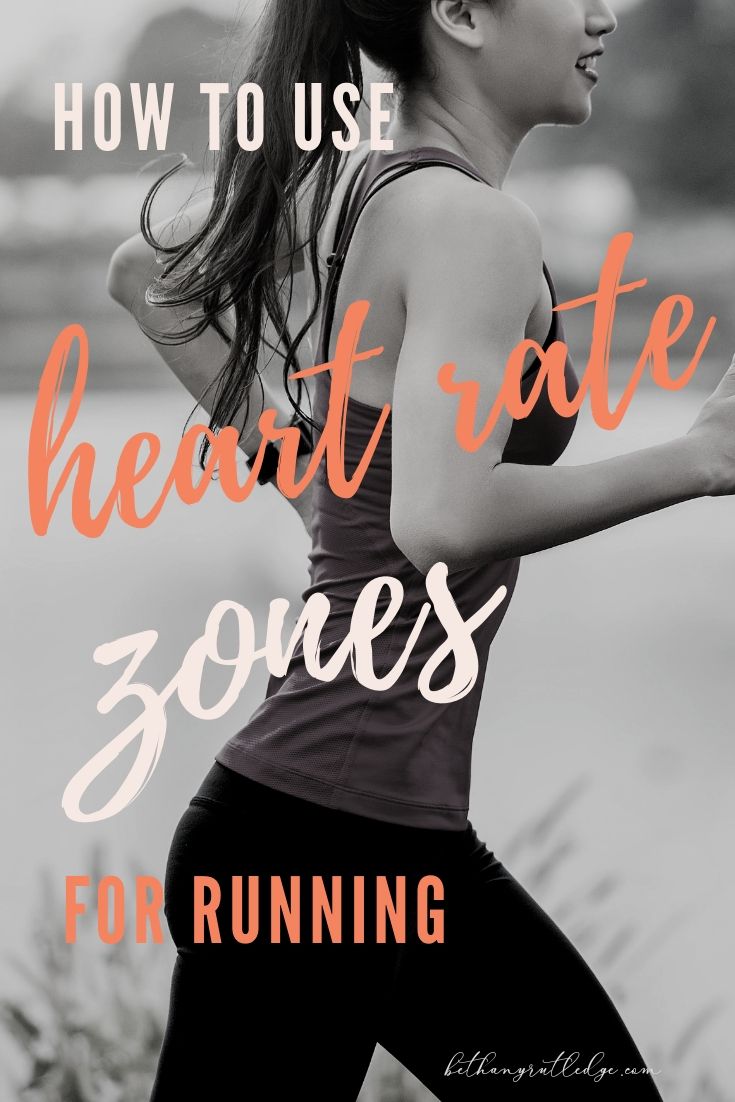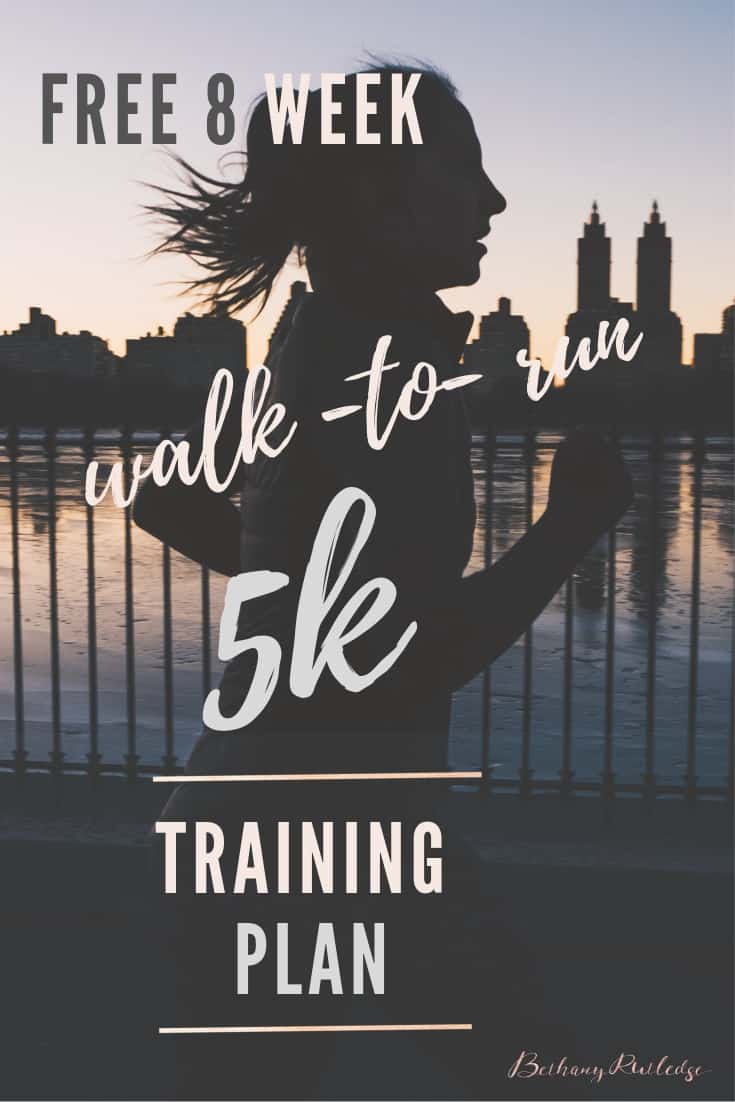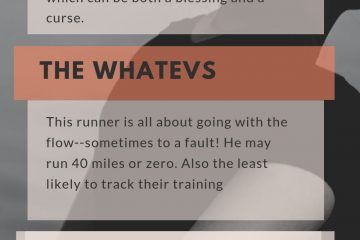Ultimate Guide to Running Heart Rate Training

As a new runner, you may wonder whether you should pay attention to running heart rate. It’s a slippery slope! Once you become interested in running heart rate training, you’re faced with a ton of question such as:
- Should you run by pace or heart rate zones?
- What’s the problem with just running by pace?
- How to find your heart rate zones?
- What should your heart rate be for running or
- which heart rate zone should you train in?
Heart Rate for Running Overview
Unfortunately, there’s no simple or blanket answer to questions about running with heart rate.
The answer is usually “it depends.” Let me explain.
Should I Run by Pace or Heart Rate Zones?
Pace is considered the gold standard of run effort measurement because it is truly objective. Heart rate is a subjective measure of how your body is responding to the effort level. Used together, pace and HR can help you achieve success in pacing your race. But…shouldn’t pace and heart rate zones track together? Not always. Let’s review a few times where you would want to differentiate between pace and heart rate as drivers of training.
The Easy Run—On a hot summer’s day, your pace may very well be zone 2 while your heart rate is zone 3 and beyond. This is a situation where I advise my athletes to look at heart rate as the primary driver. If you are constantly running at a high heart rate to hit an arbitrary pace on easy days, then you’ll be too worn out to hit your quality workouts.
Summer Easy Run Tip: The idea of an easy day is that it’s truly easy, so don’t get caught up in worrying about what your easy pace was during the cooler months!

The Track—Besides the treadmill, the track is the closest we have to all factors being equal—it’s flat, and it’s a standard length. This is why it’s the preferred place to run set distance intervals with pace as a primary driver.
Summer Track Tip: Start early. Start earlier than the time that just popped in your head. If the goal is to hit the pace, then you want to make it as easy for yourself as possible, which means running in the coolest part of the day, early morning or late evening.
The Long Run—If you’re training for a half or full marathon, your key long runs will likely include some miles at race pace. For these runs, consider using a mix of heart rate and pace to execute your long run. For instance, if you are targeting a 13-mile long run with the last three miles at race pace, run the first 10 by heart rate (i.e., at an easy pace). That way when it’s time to ramp it up, you won’t already be exhausted from arbitrarily trying to hit a pace in the beginning.
Summer Long Run Tip: Don’t make the mistake of running long in the middle of the day “for heat acclimation.” Doing shorter, easier, or occasional workouts in the heat is heat acclimation. Performing key workouts in the heat is self-defeating overkill.

Why not just run with pace?
When you first start running, every other run is a distance or pace PR, and it’s easy to get caught up in racing or going medium hard for each run. Many athletes become overly concerned with their speed and unconsciously develop rules related to pace. “I don’t like any of my runs to be slower than a ten minute mile.” “I refuse to walk during a run, even if my heart rate gets out of the prescribed zone.” Those thought patterns can lead to burnout, lack of progress, and even injury.
When to ignore running pace
But it’s hard to forget about pace, especially if you’re competitive with yourself. For this reason, ignoring pace and running by heart rate is a simple but powerful strategy. Consider ignoring pace and using heart rate instead during easy runs, triathlon races, and hot weather.
If you need to set your running heart rate and pace zones in the past, then read on, and be sure to visit Joe Friel’s Guide to Heart Rate.
How can you find your heart rate zones?
Set your heart rate zones with field testing
To test your zones, you’ll need a reliable way to record heart rate and a way to record distance traveled.
Setting zones requires an anchor point. Without a reference point, “zone two” doesn’t mean anything. Zone two of what? To populate heart rate zones, we first need to know your lactic threshold heart rate.
For heart rate to mean anything, you require a northern star, and that star is your lactic threshold heart rate. Lactate threshold (LT) refers to a point physiologically where lactate starts accumulating in the blood more quickly than it can be processed. The heart rate value that corresponds is called lactate threshold heart rate (LTHR).
If you look at any forum where new athletes gather, there is still a lot of confusion over the use of heart rate and the proper use of zones.
With the mainstream availability of wrist heart rate sensors in everything from Apple Watch to Garmin, more and more people have access to using heart rate, but sometimes that access lacks context. Thus, it is not unusual to hear athletes claiming to do all their runs in zone 5, perform three-hour rides at an IF of 1.2, or other impossible feats.
If that means nothing to you, don’t worry! We’re going to break down field testing into simple terms.
Heart rate testing the simple way
Instead of hitting an exercise physiology lab, most amateur athletes use field tests to find this value. During the test you will perform an all-out 30-minute effort. The average heart rate of the last twenty minutes of that effort is about your LTHR .
Your running LT and cycling LT are not the same and should be tested separately. At Energy Lab, we use Joe Friel’s HR training zones (see the Triathlete Training Bible by Joe Friel) which are based on your lactate threshold heart rate (LTHR). If you use heart rate in training or intend to, testing is of the utmost importance; 220 minus age is not a reliable way to set zones, nor are the default settings in Garmin Connect. Using those values will only serve to confuse and frustrate you.
The importance of heart rate zones for running retesting
As an intermediate or experienced athlete, one of the first things you will do in the training plan is test in all three sports. In some cases, it may not be appropriate to test right away in all three sports, for example, if you just started running or have an injury. After testing, your workouts will be communicated in zones.
Simple Run and Bike LTHR Test:
- Perform an easy 10-minute warm-up.
- Perform a 30-minute time trial, capturing your heart rate average for the last 20 minutes.
- Input that value into TrainingPeaks or other online calculator or use the following chart to find your values.
Your heart rate for running and cycling heart rate thresholds will be different values, so be sure to do both tests!
Heart Rate Running Chart
| Heart Rate Zone Chart | |
| Running Zones | |
| Zone 1 | Less than 85% of LTHR |
| Zone 2 | 85 to 89% of LTHR |
| Zone 3 | 90 to 94% of LTHR |
| Zone 4 | 95 to 99% of LTHR |
| Zone 5a | 100 to 102% of LTHR |
| Zone 5b | 103 to 106% of LTHR |
| Zone 5c | More than 106% of LTHR |
| Cycling Zones | |
| Zone 1 | Less than 81% of LTHR |
| Zone 2 | 81 to 89% of LTHR |
| Zone 3 | 90 to 93% of LTHR |
| Zone 4 | 94 to 99% of LTHR |
| Zone 5a | 100 to 102% of LTHR |
| Zone 5b | 103 to 106% LTHR |
| Zone 5c | More than 106% of LTHR |
Now you can use your newly corrected HR zones while following a training plan.
Here are some other frequently asked questions about heart rate when running:
What should your heart rate be for running?
Variations of the question include “Is my heart rate too (fast, slow, high, low). ” And “What should my heart rate be while running?” Here, we seek to get to the root of the issue which is heart rate without context.
If you look at any forum where new triathletes gather whether it be reddit, beginner triathlete, or even Slowtwitch, there still exists much confusion over the use of heart rate and the proper use of zones.
I am consistently surprised by the number of people who use the default Garmin Connect zones (running heart rate monitor) in their profile as gospel. These zones are calculated off of max heart rate and are virtually meaningless unless you get lucky and happen to have both the same max and derivative zones in their formula.
Now that wrist heart rate is common, many new athletes are running with heart rate monitors.
Here’s what I mean when I say “heart rate without context.”
Let me ask you a few questions: Do you have too much money in the bank? Am I too old for this? Are these pants too tight? What do those questions all have in common? The answer is that they’re all subjective, just like the question of whether your heart rate during running is too high, low, or just right.
In order for heart rate to provide value, you require a north star and that star is your lactic threshold heart rate. There are a few good ways to find this value, which by the way, will likely be different on the bike versus the run.
If you don’t have a coach to help you, then consider getting a lab test to help you get started. If you’re on your own, check out Joe Friel field tests to get a good sense of where you’re at.
Or, if you’re local and training with us, hit up an Energy Lab FTP test to get a good estimate of your cycling lactic threshold heart rate.
There is much to be said about running heart rate zone training after you’ve properly set your zones. But the first step is getting both your run and cycling zones, nailed down accurately.
What should my long heart rate me?
There is no blanket answer to this question, but in general, much of your long run(s) should be accomplished in Heart Rate Zone 2.
What’s a good heart rate for running?
There is no blanket answer to this question, but in general, much of your running should be accomplished in Heart Rate Zone 2.
Related: Learning to run easy [to run faster]
What should be your heart rate for 5k?
In general most athletes won’t use heart rate to pace a 5k, at least not my athletes. However, many athletes “racing” the 5k distance will run at a heart rate close to their lactate threshold heart rate.
Now it’s your turn
Do you have any thoughts to add on running with pace versus heart rate? Reply in the comments! Also, if you’re a coach or longtime runner, let me know what new-runner FAQs I should add for future posts.
Need a beginner 5k training plan to get started? Be sure to grab a copy. Just click below and tell me where to send it.

Want help taking your run to the next level this year? Start by filling out the Energy Lab one on one coaching application or check out the Atlanta Tri Club schedule for group training!
What’s Next: Top Four Mistakes Made by New Runners
You might also enjoy:
- Ultimate Guide: How to start cycling
- Find your runner personality [ to go faster]
- Top 4 worst new runner mistakes
- How does Garmin race predictor work?
- The real deal on getting back in shape after baby
Like what you read? Pin it!

More Heart Rate Running Resources
The Beginner’s Guide to Heart Rate Monitor Training | Strength Running
New Running Journey: Heart Rate Training with MAF
Chi Running and Heart Rate Training in the Heat – Chi Running
How heart rate training can help you beat the heat – Canadian Running Magazine
Running on Heart Rate – Train Strong, Eastbourne Personal Training, East Sussex



12 Comments
Abbey Sharp · June 11, 2019 at 7:51 pm
This was a really interesting post. I never thought about these differences. Thanks for sharing
Stephanie McKercher · June 12, 2019 at 1:55 pm
There are so many great tips here! I used to be really caught up in keeping my pace, and I’d beat myself up about going too slow—even when it was really hot out or I wasn’t feeling well—so I love the idea of using heart rate (and sometimes just ignoring the time) instead!
5 ways to improve your running after you've plateaud - Bethany Rutledge · January 15, 2019 at 7:14 pm
[…] Next up: Should I run by pace or heart rate? […]
5 ways to (really) improve your running — Bethany Rutledge · January 22, 2019 at 9:55 pm
[…] Next up: Should I run by pace or heart rate? […]
11 surprising tips to get in shape after baby — Bethany Rutledge · March 4, 2019 at 10:14 pm
[…] Next up: Should I run by pace or heart rate? […]
9 weird exercise motivation tips for new moms – Bethany Rutledge · April 19, 2019 at 5:41 pm
[…] Next up: Should I run by pace or heart rate? […]
Your top eleven questions about how to start running — Bethany Rutledge · May 7, 2019 at 12:38 pm
[…] Read More: Should I use pace or HR? […]
Essential Running Gear for Women l 2019 — Bethany Rutledge · June 4, 2019 at 8:31 pm
[…] See: should you be running by pace or HR? […]
Marathon Training for Beginners l 2019 — Bethany Rutledge · June 9, 2019 at 7:12 pm
[…] marathon preparation and avoided a stringent time goal for my first marathon. I also should have trained with heart rate and payed attention to it during the […]
Tips for Running in the Heat — Bethany Rutledge · June 24, 2019 at 4:08 pm
[…] sure to check out running with pace versus heart rate for more advice about running in the summer […]
find your run personality [ to go faster] — Bethany Rutledge · July 5, 2019 at 2:22 pm
[…] Next up: Should I run by pace or heart rate? […]
The best 5k pacing strategy for all levels — Bethany Rutledge · July 13, 2019 at 1:46 pm
[…] Read: What you need to know about running with heart rate. […]
Comments are closed.